Book publishing services are essential to the publishing industry, enabling authors to bring their work to the public. However, their costs and pricing models can vary significantly, making it challenging for authors to determine the most cost-effective option for their needs.
Understanding these costs and pricing models is important for authors considering self publishing, as it can impact their profitability and success.
In this blog we will discuss the factors that authors should consider when choosing a book publishing service and offer tips for maximizing profitability. By the end of this article, readers will better understand the costs and pricing models of book publishing services, empowering them to make informed decisions about their publishing options.
Traditional Book Publishing Costs
Traditional book publishing has long been a popular option for authors looking to get their work into the hands of readers. However, the costs associated with traditional publishing can be significant, and understanding these costs is crucial for authors considering this route.
The traditional publishing process typically involves an author submitting their manuscript to a publishing house for consideration. If the manuscript is accepted, the publisher may offer an advance payment against future royalties, which can range from a few thousand dollars to several hundred thousand dollars depending on the book’s potential marketability.
According to data from the Authors Guild, the average advance for a first-time author in the US is between $5,000 and $15,000. However, advances can range from as little as $1,000 to as much as $500,000 for established authors or books with high commercial potential.
After editing and designing the manuscript, the book publisher will print and distribute the book. Printing costs can vary depending on the book’s format, length, and print run and are typically paid for by the publisher. According to The Balance, a financial advice website, printing costs for a 300-page paperback book with a print run of 5,000 copies can range from $5,000 to $10,000.
Marketing is another important cost associated with traditional book publishing. Book publishers may invest in book reviews, author tours, and advertising campaigns to promote the book to potential readers. According to the Independent Publishers Group, a book distribution and marketing company, marketing costs can range from $10,000 to $50,000 depending on the publisher’s marketing plan and the book’s genre and marketability.
Self Publishing Costs
Self publishing has become increasingly popular in recent years, and for a good reason. With the rise of digital publishing platforms and the ease of self publishing, getting your book out into the world is easier than ever. However, one of the biggest concerns for self publishers is the cost. Here we’ll take a closer look at the self publishing costs and provide some exact figures to help you plan your budget.
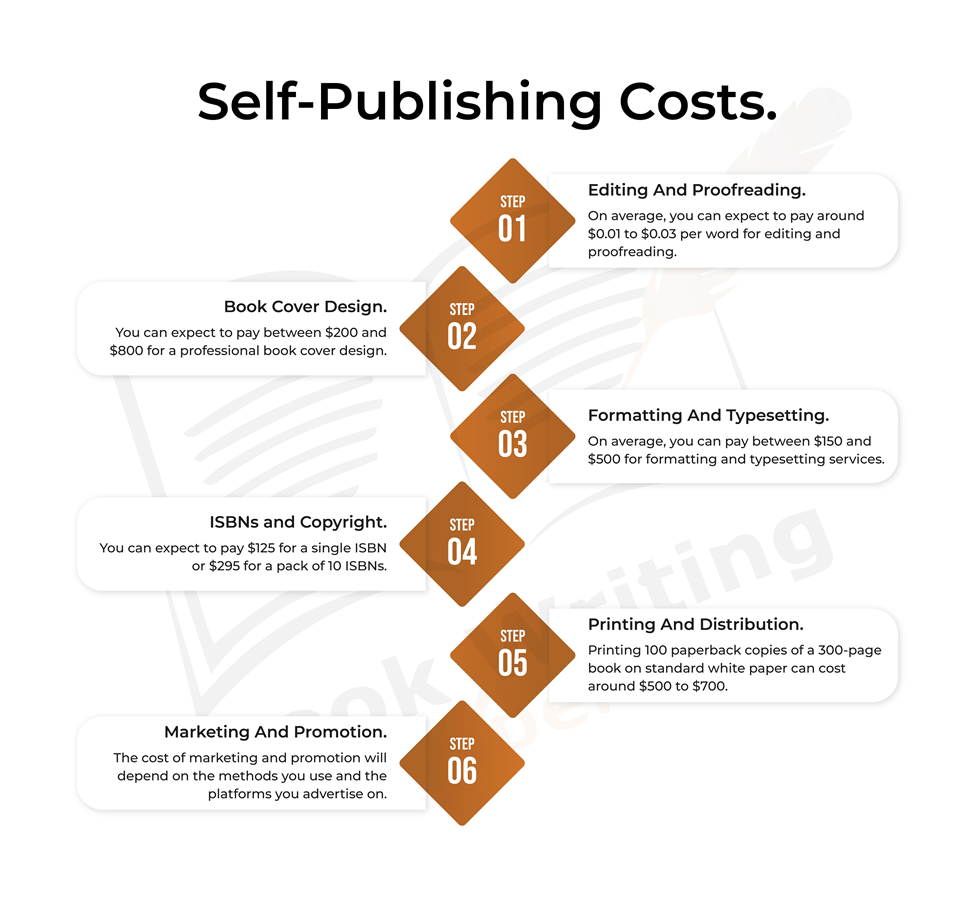
1. Editing And Proofreading.
One of the most important aspects of self publishing is ensuring that your book is of high quality. This means that you’ll need to invest in editing and proofreading services. The cost of editing and proofreading will depend on the length of your book and the level of editing you require. For example, if you have a 60,000-word manuscript, you can expect to pay between $600 and $1,800 for editing and proofreading services.
On average, you can expect to pay around $0.01 to $0.03 per word for editing and proofreading.
2. Book Cover Design.
Another crucial aspect of self publishing has an eye-catching book cover design. A professional book cover can make all the difference in getting your book noticed by potential readers. The cost of book cover design will depend on the complexity of the design and the experience of the designer.
On average, you can expect to pay between $200 and $800 for a professional book cover design.
3. Formatting And Typesetting.
Formatting and typesetting are important aspects of self publishing that ensure your book looks professional and is easy to read. The cost of formatting and typesetting will depend on the complexity of your book and your experience with the formatter.
On average, you can pay between $150 and $500 for formatting and typesetting services.
4. ISBNs and Copyright.
ISBNs and copyright are essential for self publishing. An ISBN is a unique identifier for your book that helps retailers and libraries find and order your book. The cost of an ISBN will depend on your country and the number of ISBNs you require. In the United States, Bowker is the official ISBN agency, and you can expect to pay $125 for a single ISBN or $295 for a pack of 10 ISBNs. Copyright registration is another important aspect of self-publishing that protects your book from plagiarism and infringement.
In the United States, you can register your copyright with the United States Copyright Office for a fee of $45 to $65.
5. Printing And Distribution.
Printing and distribution are high costs of self publishing, but they depend on whether you print physical copies or publish your book digitally. If you choose to print physical copies, the cost will depend on the number of copies you print, the size of your book, and the type of paper you use. For example, printing 100 paperback copies of a 300-page book with a 6×9-inch trim size on standard white paper can cost around $500 to $700.
If you choose to publish your book digitally, you can use platforms like Kindle Direct Publishing, Kobo Writing Life, or Smashwords to publish and distribute your ebook for free.
6. Marketing And Promotion.
Marketing and promotion are critical to the success of your book, but they can also be costly. The cost of marketing and promotion will depend on the methods you use and the platforms you advertise on. For example, running a Facebook ad campaign can cost anywhere from a few dollars to several hundred dollars, depending on your targeting and ad placement.
Similarly, running a book tour or attending a book festival can cost several hundred to several thousand dollars, depending on the location and duration of the event.
Pricing Models Of Book Publishing Services.
Publishing a book can be an exciting but daunting process, especially when it comes to choosing a pricing model for the publishing services you need. Book publishing has three main pricing models: flat fee, commission-based, and hybrid. Here we will explore these pricing models, provide examples of book publishing services that use each model, and compare them regarding transparency, flexibility, and cost-effectiveness.
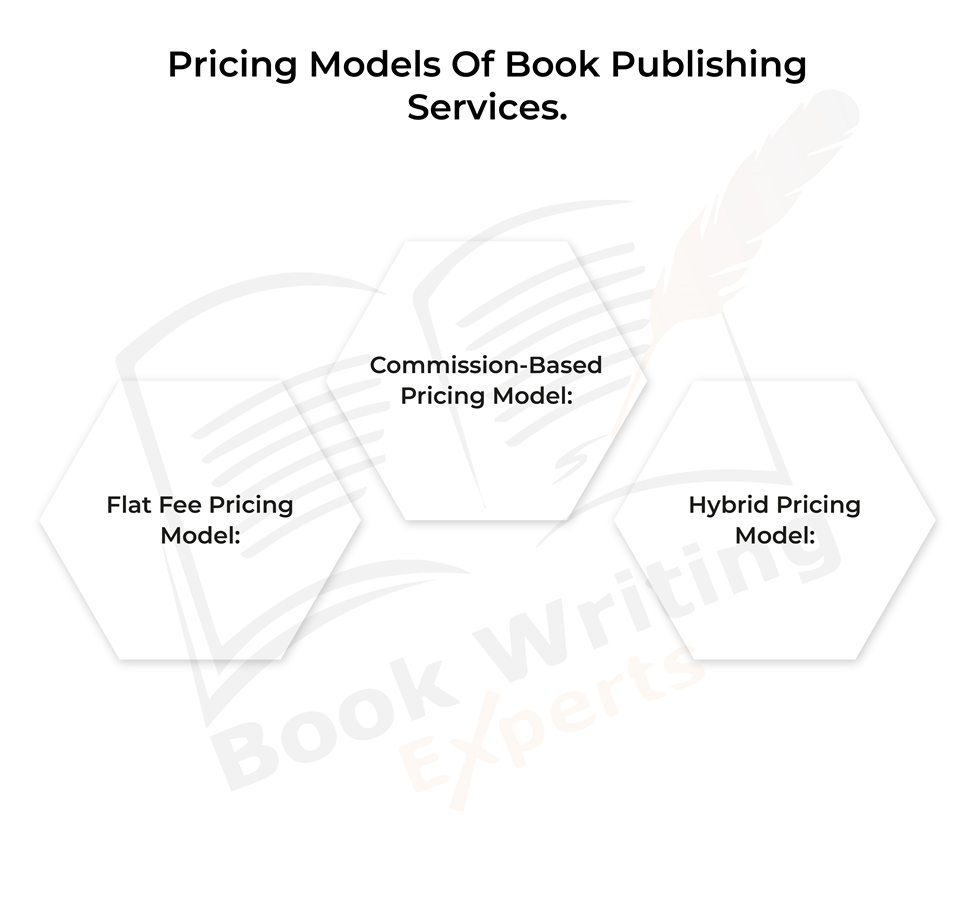
Flat Fee Pricing Model:
In the flat fee pricing model, book publishers charge a set fee for their services, regardless of the book’s sales. This pricing model is transparent, as authors know exactly how much they will pay upfront. The downside is that authors may pay more than they would with commission-based pricing if the book doesn’t sell well.
Commission-Based Pricing Model:
In the commission-based pricing model, book publishers take a percentage of book sales in exchange for their services. This pricing model can be more cost-effective for authors as they only pay if their book sells well. However, it can be less transparent as the percentage taken by the book publisher may not be clearly stated.
Examples Of Book Publishing Services That Use The Commission-Based Pricing Model:
Kindle Direct Publishing (KDP): Amazon KDP allows authors to self-publish their ebooks and print books on Amazon. Authors receive up to 70% of the sale price for ebooks and up to 60% of the list price for print books.
IngramSpark: IngramSpark offers self publishing services for print and ebooks, taking a percentage of book sales in exchange for their services. Authors receive up to 70% of the list price for ebooks and up to 45% of the wholesale price for print books.
Hybrid Pricing Model:
In the hybrid pricing model, book publishers charge a combination of a flat fee and a commission on book sales. This pricing model can offer the benefits of both flat fee and commission-based models, but it can also be less transparent as authors may not know exactly how much they will pay upfront or how much the publisher will take from book sales.
Comparison Of Pricing Models:
In terms of transparency, the flat fee model is the most transparent, as authors know exactly how much they will pay upfront. The commission-based model can be less transparent as the percentage taken by the publisher may not be clearly stated. The hybrid model can be less transparent as authors may not know exactly how much they will pay upfront or how much the publisher will take from book sales.
In terms of flexibility, the commission-based model can be the most flexible, as authors only pay if their book sells well. The flat fee model can be less flexible, as authors pay the same amount regardless of how well their book sells. The hybrid model can offer a balance of flexibility, as authors pay a flat fee but also have the potential to earn more from book sales.
In terms of cost-effectiveness, the commission-based model can be the most cost-effective, as authors only pay if their book sells well. The flat fee model can be less cost-effective if the book doesn’t sell well, as authors will have paid a set fee regardless. The hybrid model can offer a balance of cost-effectiveness, as authors pay a flat fee but also have the potential to earn more from book sales.
It’s important for authors to consider their goals, budget, and preferences when choosing a pricing model for book publishing services. Each model has its own benefits and drawbacks, and what works best for one author may not work best for another.
The main pricing models in book publishing are the flat fee, commission-based, and hybrid pricing models. Each model has its own advantages and disadvantages regarding transparency, flexibility, and cost-effectiveness. By understanding these pricing models and carefully considering their options, authors can choose the best pricing model for their needs and budget.
Factors That Affect Book Publishing Costs.
Book publishing costs can vary widely depending on a range of factors. These factors include book length, complexity, genre, and target audience. Understanding these factors and how they impact costs can help authors make informed decisions about their publishing options.
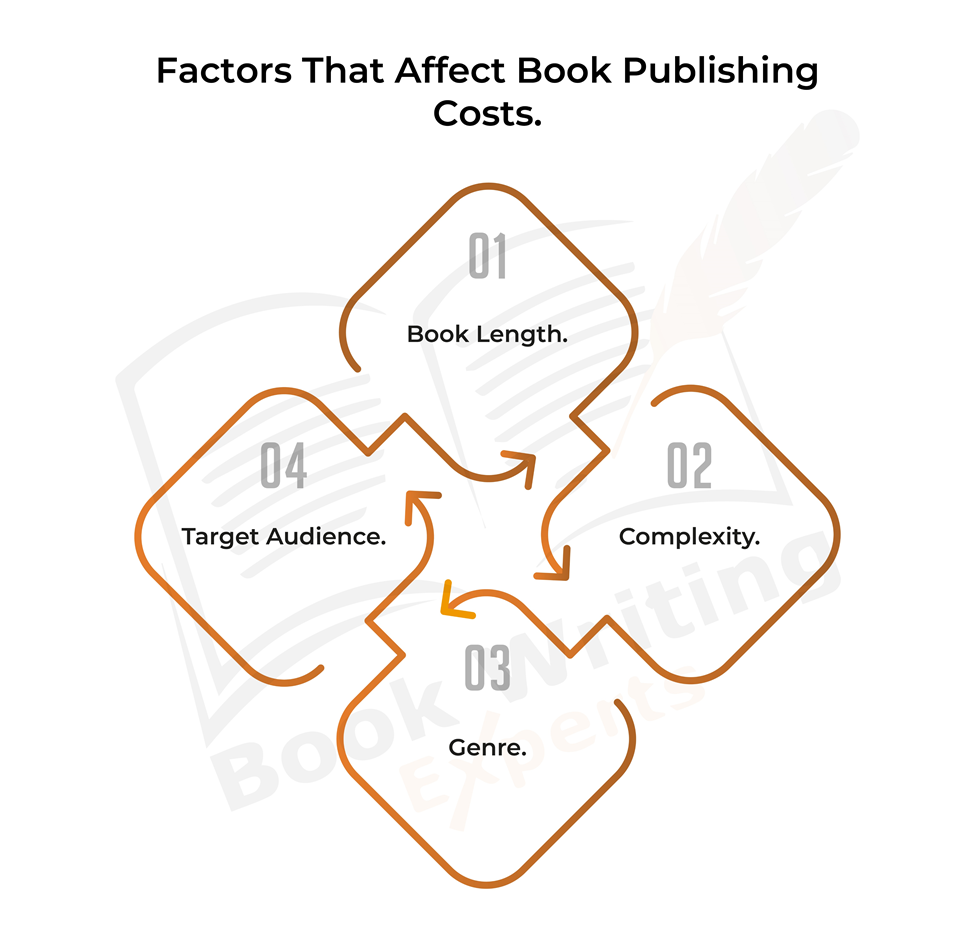
1. Book Length.
One of the most obvious factors that can affect book publishing costs is book length. Longer books generally require more editing, layout, and design work, which can increase costs. In traditional publishing, book-length can also impact printing and distribution costs.
For example, a longer book may require more pages, which can increase printing costs. In self publishing, authors can offset some of these costs by publishing only in ebook format, which is less expensive than print.
2. Complexity.
The complexity of a book can also impact publishing costs. For example, a book with numerous illustrations, graphs, or tables may require more design work than a book with only text. Additionally, books that require specialized formattings, such as poetry or children’s books, may require more time and expertise from designers and editors. In traditional publishing, complex books may also require additional resources for marketing and promotion.
3. Genre.
The genre of a book can also impact book publishing costs. For example, non-fiction books may require more research and fact-checking, which can increase editing costs. Additionally, books in niche genres may require specialized marketing and promotion, which can add to overall costs. In self publishing, authors may need to consider the costs of hiring professionals with expertise in their particular genre.
4. Target Audience.
The target audience for a book can also impact publishing costs. For example, books aimed at younger audiences may require more illustrations or a different layout than books aimed at adults. Additionally, books aimed at international audiences may require translation and localization services, which can add to costs. In traditional publishing, books aimed at niche audiences may also require specialized marketing and promotion efforts.
Tips for Managing Book Publishing Costs.
Publishing a book can be expensive, but there are ways to manage book publishing costs and stay within a budget. Here are some practical tips for authors looking to manage their book publishing costs:
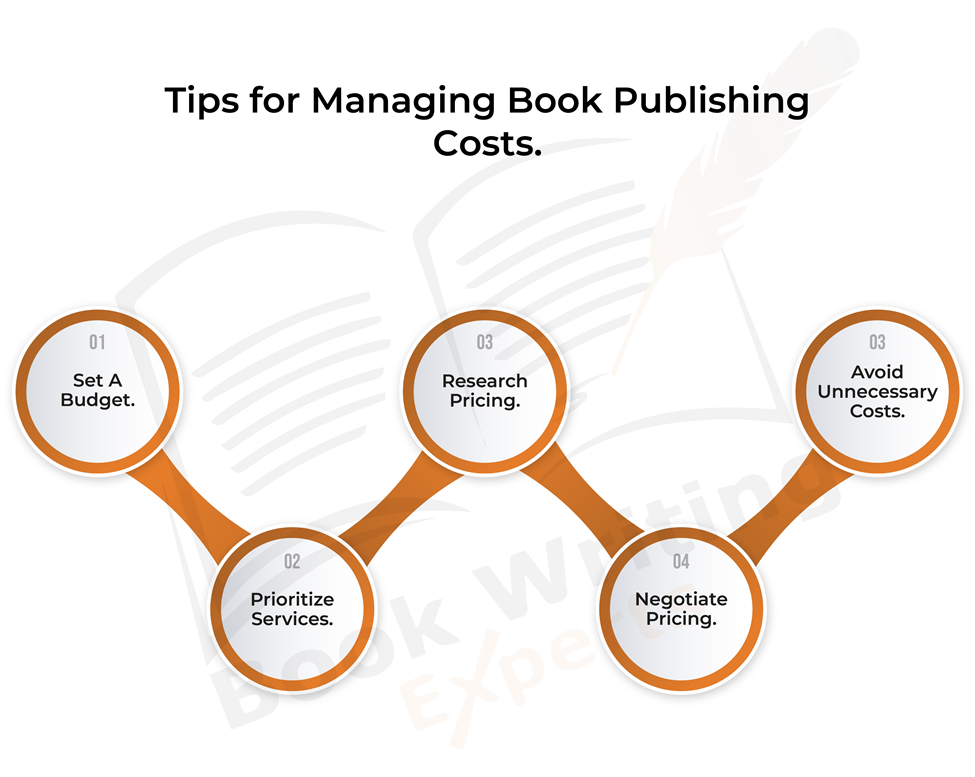
- 1. Set A Budget: Before starting the book publishing process, it is important to set a budget. This will help you determine how much you can afford to spend on each stage of the process, such as editing, design, and marketing. By having a budget in place, you can avoid overspending and ensure that you are getting the most value for your money.
- 2. Prioritize Services: It is important to prioritize the services you need to publish a book. Focus on the services that are essential for the quality of your book and achieving your goals. For example, editing and cover design is important for your book’s success if you publish a novel. Similarly, if you’re writing a non-fiction book, fact-checking can be very important.
- 3. Research Pricing: Research and compare prices from different book publishing service providers. Don’t hesitate to ask questions about their services, what’s included in their pricing, and if they offer any discounts or payment plans. A little research can help you find a provider who can deliver the services you need within your budget.
- 4. Negotiate Pricing: Don’t be afraid to negotiate with book publishers or service providers. You can ask them to customize their services to match your needs and budget. Book publishers can be flexible on pricing depending on the services they require, the length of the book, and the expected sales.
- 5. Avoid Unnecessary Costs: It’s important to balance quality with cost when publishing a book. Avoid spending on services that don’t add much value to your book or don’t fit your budget. For example, printing hundreds of copies for a book launch event may not be necessary, especially if you’re starting out with self publishing. You can consider e-book publishing or print-on-demand services that can help you save on printing costs.
Takeaways!
All in all, the cost of book publishing services differs depending on the chosen service and pricing model. Factors such as editing, cover design, distribution channels, marketing costs, and other miscellaneous charges must be considered to determine an accurate budget for a book project.
Why Us?
Book Writing Experts is a leading book publishing company with decades of experience in the industry. Our team of experts is dedicated to providing high-quality, affordable services that will help you get your book published promptly and cost-effectively. We offer comprehensive publishing solutions, from editing and formatting to cover design and distribution.
Our staff of professionals at Book Writing Experts understands the importance of making sure that your book is perfectly tailored to meet all your needs. We also provide exceptional customer service, ensuring that any questions or concerns you may have are quickly addressed.
What Our Clients
Say About Us
My sister was struggling with her book sales; I recommended Book Writing Experts book promotion services. Since then the sales have skyrocketed. I have never seen such great results in a short time.
James Moris

Book writing Experts are truly remarkable!
I worked with Sam Jordan and he stayed in contact with me almost every day. This was my first time as and Author and To put it mildly, I probably drove him crazy, but he never once was unkind or got angry a true professional and patients of a saint.
Evelyn Keplinger

I worked with Sam Jordan for a few months preparing my first book. Sam was very helpful and courteous. We connected on the phone several times a week. I am not the most patient person, but I found Sam to be capable and professional. He helped me overcome any fears I had about the process..
Ron

my creation of this 24 chapter book is actually a 24 part mini series.
But once Claire and Sam from the book writing experts Joined forces with me they turned my little Mini masterpiece into a Netflix/Amazon series.
43 years of silence Will become an overnight Box office success.
Thank you Claire.
I love your team.
Luis Reyes

Since I was short on money and couldn’t afford an expensive proofreader for the book, I was legit quite worried because having a second opinion is always better? My friend recommended Book Writing Experts’ affordable proofreading services, and wow! They were very accommodating and got my work done in 3 days only. So happy!
Dyuti Hai

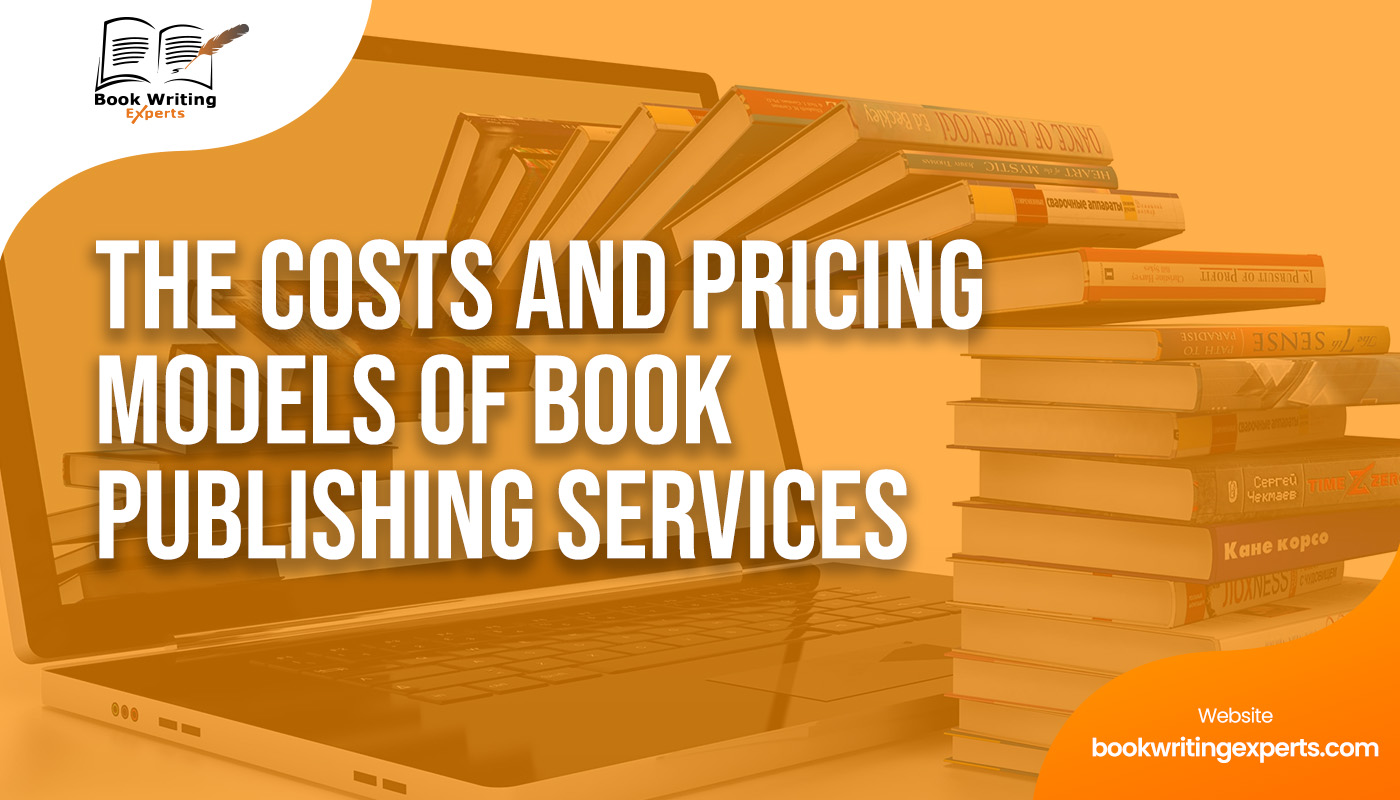
Leave a Reply